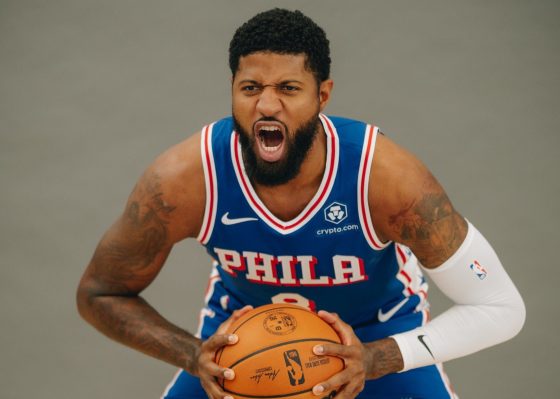This year, the NBA increased the number of two-way contracts from two to three and with the most recent signing of Neemias Queta, the Boston Celtics have officially used all three of their two-way deals for the upcoming season. Last year JD Davison and Mfiondu Kabengele were Boston’s two-way players splitting time with the Celtics and the Maine Celtics.
The Celtics have Davison, Queta, and Jay Scrubb locked under two-way deals for the 2023-24 season. It is unlikely that any of the three will get significant minutes with Boston unless there is an injury to provide a pathway to the group. Whether it’s garbage minutes or a quick spurt off the bench to provide energy, I decided to take a look at each two-way player and see what they can offer this team if called upon.
JD Davison
Our 2022 second-round draft pick signed his second two-way deal at the start of the summer. Davison impressed in Maine averaging 12.5 points and 8.7 assists. The concern with Davison has been turning the ball over. Unfortunately, this past Summer League, Davison shot 26.7% from deep while registering 22 turnovers and 31 assists. He averaged 2.9 turnovers across 26 games in Maine.
Davison’s best game for Boston came in the final regular season game against the Atlanta Hawks. Davison recorded 8 points, 3 assists, and 3 rebounds in 35 minutes.
What Davison does provide is speed. Davison has a quick first step that allows him to get by his defender and into the paint.
When Davison gets into the paint, he tends to rely on his floater to get his shot over the taller defender.
Davison is an explosive athlete and when he’s out in the open court there are a few that can stop him.
It will be a surprise if Davison gets significant minutes in Boston this year, but another season in Maine to improve on his ball security and decision-making can only be a positive for the 20-year-old.
Jay Scrubb
Jay Scrubb is the second player the Celtics signed to a two-way deal. The shooting guard was drafted by the Brooklyn Nets in the second round in 2020 but subsequently traded to the Clippers.
Stephen R. Sylvanie-USA TODAY Sports
Now entering his fourth year in the league, Scrubb impressed during his Summer League stint, showing his ability to score. From a primary ball handler to slashing to the basket, you couldn’t take your eyes off of Scrubb during in Vegas.
Standing at 6’5, Scrubb has good body control while attacking the rim.
Even when attacking the opposing team’s big man, Scrubb’s athleticism allows him to hang in the air and adjust his shot accordingly.
Off-the-ball movement and running off of screens are one of Scrubb’s strengths. Whether it’s a quick pull-up jumper or one dribble straight into his shot, the guard is always looking for his shot when space opens.
Using Maine to continue to develop his defensive side of the game will be beneficial. It will come to no one’s surprise if Scrubb is the leading scorer in Maine this year. Wherever Scrubb has gone, he’s not only had the ball in his hands but is a player his teammates look to to make plays. Whether it’s garbage minutes in the NBA or being the best player while at junior college, Scrubb knows how to score the ball.
Neemias Queta
Queta is the third and final two-way player to be signed by Boston. Out of the three players splitting their time between Maine and Boston, Queta has the best chance of playing the most minutes for Boston.
Not only do the Celtics have a small number of big men on their roster (Horford, Williams, Porzingis, and Kornet) but half of the bigs have struggled with injuries in their respective careers.
Both Rob Williams and Kristaps Porzingis have missed a lot of time over the last few seasons for various reasons. Al Horford doesn’t play back-to-back games anymore so there is room for Queta to see the floor throughout the season.
:no_upscale()/cdn.vox-cdn.com/uploads/chorus_asset/file/24946384/usa_today_19668116.jpg)
Sergio Estrada-USA TODAY Sports
It came as a surprise to Kings fans that Queta was cut by the Kings (to make room for JaVale McGee) after an impressive season with their G-League team, the Stockton Kings.
Queta was the G League MVP runner-up last season, averaging 16.8 points and 8.8 rebounds while shooting 68% from the floor.
Queta brings size to Boston’s frontcourt standing at 7 feet tall and weighing around 250 pounds. On offense, Queta will constantly be asked to provide screens, but Queta showed solid offensive awareness to space the floor for ball handlers to attack the rim without Queta interfering.
The following clip will look familiar to Celtics fans as it’s a similar play Boston calls for Rob Williams.
Queta will primarily roam the paint looking for cleanups and offensive rebounds. He does not have a jumpshot which limits him, but he is a willing passer as Queta averaged 2.5 assists for the Stockton Kings last season.
On defense, Queta will contest everything at the rim. The Portuguese man finished the G League fourth in blocks per game.
Queta won’t find himself on the parquet immediately, but if the frontcourt can’t stay healthy, Queta may be one of the options Joe Mazzulla will look to for brief stints throughout games.
Even if neither of these players plays a big role in Boston, they will be fun to watch in Maine. Between the speed and directness of Davison, the scoring ability of Scrubb, and the presence and dominance in the paint of Queta, the Maine Celtics have a trio of players that can make them one of the better teams in the G-League this year.






